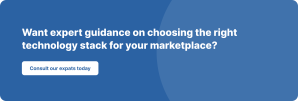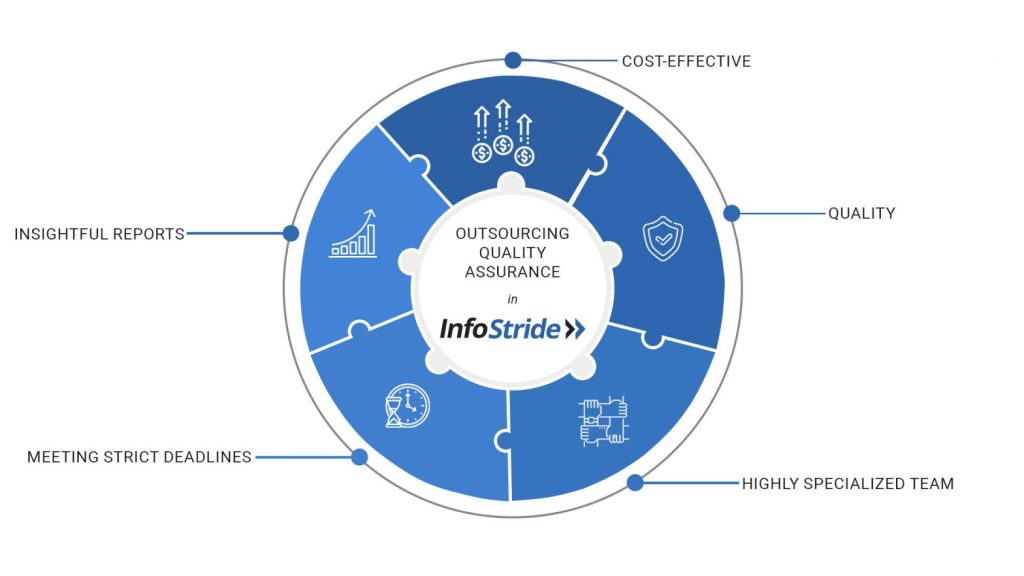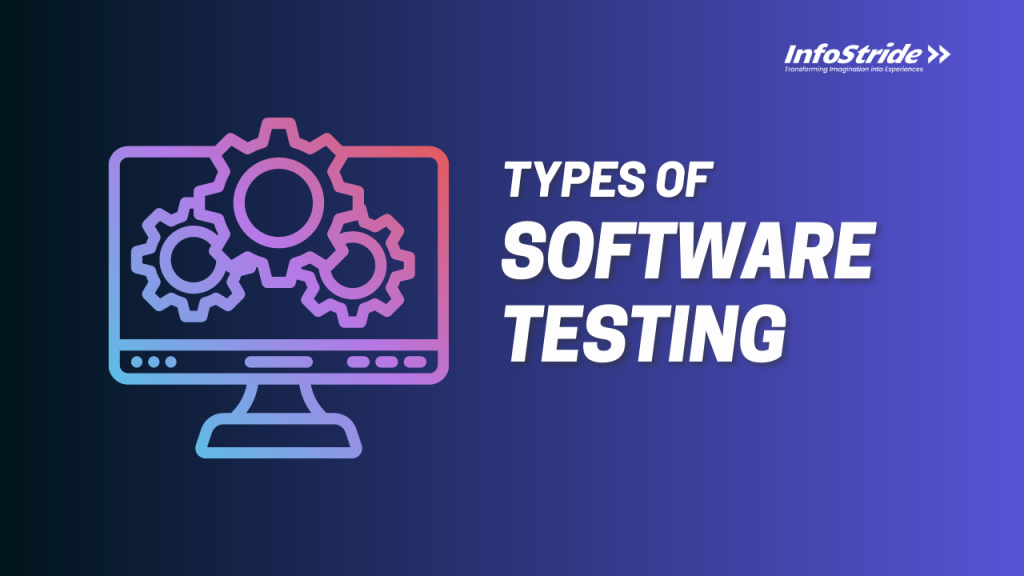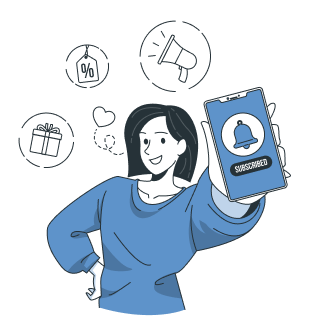With consumers spending a whopping 3.25+ trillion dollars on online marketplaces in 2022, it has ignited a surge of enthusiasm among many aspiring entrepreneurs to create an online marketplace.
Whether you’re looking to create a global marketplace platform like Amazon, a hyper-local platform like TaskRabbit or a niche-specific marketplace like Etsy, understanding the cost to create a marketplace website is a crucial step to bringing your idea to life.
While the expenses can vary greatly depending on several factors such as design complexity, the development approach and the technology stack, this blog will provide you with a comprehensive overview of all the key factors that influence the cost of building a marketplace website.
What is the average cost to create a marketplace in 2023?
A quick Google search will unveil a price range that spans from $20,000 to over $50,000. However, rates can vary depending on the features and functionality of the marketplace, the complexity of your project, your development’s location, the development approach and other factors.
Well, don’t worry. Continue reading to explore a comprehensive analysis of all the key factors that influence the cost to create a marketplace website.
6 Factors that Affect the Cost to Create a Marketplace Website
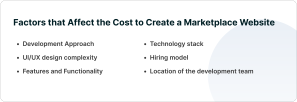
Here are 6 key factors that impact the marketplace website development cost.
1. Development Approach
Your decision to decide whether you want to create your marketplace from scratch or use pre-build platforms like Magento, Shopify or WordPress with marketplace plugins can greatly affect the price tag.
Though custom website development can offer flexibility and control, it incurs higher costs due to the need for custom coding and design. On the other hand, pre-built marketplace platforms offer ready-made solutions with lower upfront costs but customization options are limited with this approach.
2. UI/UX design complexity
The design aspect of your marketplace website influences not only its visual appeal but also its user-friendliness, engagement and overall user experience. Here’s how UI/UX design complexity affects the cost to create a marketplace website:
- High design complexity involves creating unique visual elements, layouts and color schemes to match your brand identity.
- Customized branding increases development time, leading to higher costs.
- Intricate UI elements, animations and transitions enhance the visual experience but require more design effort.
- Adapting the app’s design for various devices and screen sizes requires extra effort.
- Ensuring the app is accessible to all users, including those with disabilities, necessitates thoughtful design adjustments.
These factors require the assistance of talented designers who possess a clear understanding of market needs, which results in higher marketplace website development costs. However, it’s crucial to strike a balance between design investment and your budget. Discuss your design requirements and budget with experts to find the right balance for your project.
3. Features and Functionality
The cost to create a marketplace website depends a lot upon the number and complexity level of features you want to add.
A simple marketplace website with fewer features will incur lower costs when compared to a complex website with an extensive range of features. In essence, the greater the number of features integrated into the website, the higher the overall budget.
Here are the must-have features for buyers, sellers and the admin panel on a marketplace website:
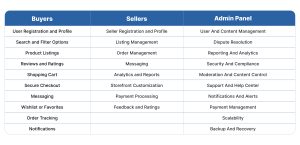
4. Technology Stack
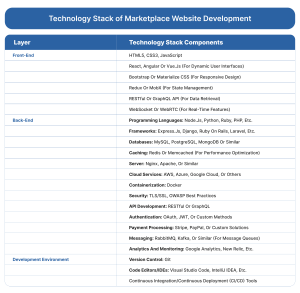
The technology stack refers to the combination of programming languages, frameworks, libraries, databases and tools used to build a marketplace website. The choice of technology stack can impact the overall custom marketplace website development cost.
Picking a less popular or intricate technology stack might necessitate hiring specialized developers at higher rates, elevating overall expenses. Moreover, some stacks may require updates and maintenance more often, leading to higher ongoing costs. Additionally, licensing or subscription fees for certain components can add to the financial burden.
Thus, the technology stack should be chosen carefully, aligning with the project’s specific needs, development team expertise and long-term goals to effectively manage costs while delivering a robust marketplace website.
5. Hiring model
When it comes to finding developers to build your marketplace, you have three main options: build an in-house development, hire freelancers or work with an outsourced marketplace website development team.
- In-house teams: This is the most traditional hiring model, where you hire full-time employees to work on your marketplace website. This gives you complete control over the development process, but it can be expensive and time-consuming to hire an in-house team of developers as you’ll be accountable for things like payroll taxes, benefits and any other legal aspects that come with hiring full-time employees.
- Freelancers: This is where you hire individual freelancers such as designers, developers and testers to work on your marketplace website. This can be the most cost-effective option, but it can also be the most time-consuming and difficult to manage multiple freelancers.
- Outsourcing: This is where you hire a third-party company that offers marketplace website development services. This can be a more cost-effective option than in-house development because it reduces the burden of all overhead expenses that come along with assembling an in-house development team.
6. Geographical location of the development team
The location of your development team will greatly influence the cost to create a marketplace website.
Well, the cost of living varies greatly from one region to another. In general, the cost of living in developed countries is higher than in developing countries. Thus, you’ll find developers with a higher price tag in developed regions than developers in developing countries.
For example, the average hourly rate for a developer in the United States is $100, while the average hourly rate in India is $25.
Here’s how much developers from different regions charge on an hourly basis:
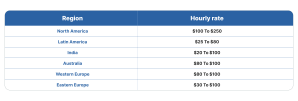
The Hidden Costs of Building a Marketplace Website
Building a marketplace website can be an exciting venture with the potential for significant returns. However, it’s essential to be aware of the hidden costs that can accumulate during the development and maintenance process. These hidden costs may not be immediately obvious, but they can impact your budget greatly. Here are some of the hidden costs associated with creating a marketplace website:
1. Domain name registry
Choosing a domain name is crucial for your marketplace branding, so it’s a must to choose a memorable and relevant domain name that aligns with your marketplace’s niche and target audience.
The cost to create a marketplace website is not directly affected by the domain name you choose. However, there are a few ways that choosing a domain name can indirectly affect the cost of your marketplace:
- Domain name registration fees: The cost of registering a domain name varies depending on the registrar you choose and the top-level domain (TLD) you choose. Some TLDs, such as .com, are more expensive than others.
- Domain name availability: If the domain name you want is already registered, you may need to purchase it from the current owner. This can be expensive, especially if the domain name is popular or valuable.
2. Hosting
The choice of hosting for your marketplace website can also impact the overall cost of creating and maintaining your platform.
Hosting services come in various types and pricing tiers, ranging from cost-effective shared hosting to more robust options like VPS (Virtual Private Server), dedicated hosting, and cloud hosting.
However, the cost implications don’t stop there. As your marketplace grows, hosting plays a crucial role in ensuring your platform’s performance, reliability, and scalability. Opting for a hosting plan that is insufficient in terms of resources can lead to performance issues and potential downtime, necessitating upgrades or migrations to pricier plans.
Therefore, it’s essential to choose a hosting solution that aligns with your current and future needs while staying within your budget to avoid unexpected expenses.
3. Quality assurance
Once your marketplace website is developed, it needs to be rigorously tested to ensure that it delivers a flawless experience to all users, including those with disabilities. Some vendors may charge additionally for quality assurance & accessibility services.
4. Iterations & enhancement
Change requests might arise throughout the ongoing development phase, introducing the need for revisions and subsequently impacting the overall marketplace website development cost. Thus, it is essential to set aside a contingency budget to address unexpected challenges or requirements that might arise during development.
5. Maintenance plan
After the launch, it’s vital to continue updating and maintaining your marketplace to ensure that it keeps pace with evolving customer needs and new technology trends. These maintenance costs are typically around 20% of overall website development costs per year.
6. Growth marketing
Even the best marketplace won’t be successful if nobody knows about it. To promote your marketplace for user acquisition, you must invest in growth marketing strategies such as social media advertising, search engine optimization, email marketing, paid advertising, content marketing and among others.
7. Third-party integrations
Third-party integrations for your marketplace website can add both value and costs to your project. Many third-party services, such as payment gateways, geolocation services or analytics platforms, often come with subscription fees. These fees can be monthly or annual and should be taken into account as ongoing operational costs.

Get a Free Quote to Build Your Marketplace Website
Are you ready to turn your breakthrough marketplace idea into reality? Whether you want to build an on-demand food delivery marketplace like Postmates, a ride-sharing marketplace like Uber or a freelance marketplace like Fiverr, we offer end-to-end marketplace app development services.
With our expertise in marketplace development solutions, we comprehend the intricate demands of the industry and the technology that drives it. Our experienced professionals are eager to work closely with you, delivering a marketplace that aligns with your goals and caters to the expectations of your users. From initial conceptualization to deployment, maintenance and marketing, we’ve got you covered.
Get in touch with us now for a free cost estimation to build your marketplace.
FAQs
1. Should I build a custom marketplace or use a pre-built solution?
It depends on your specific needs. Pre-built solutions are cost-effective and faster to set up, while custom development offers full customization but may come at a higher cost.
2. How to optimize the cost of creating a marketplace website?
Here are some tips for reducing the cost to create a marketplace website:
- Start with a basic website and add features over time with an MVP app development approach.
- Use a pre-built platform like WordPress or Shopify.
- Outsource the development to a third-party company in a country with lower development costs.
- Use open-source technologies.
3. Are there ongoing costs associated with running a marketplace website?
Yes, ongoing costs include hosting, domain registration, third-party integrations, maintenance, marketing, scalability expenses and transaction fees if your marketplace involves financial transactions.
4. How can I choose the right development team to build my marketplace website?
When choosing a development team to build your marketplace website, it is important to consider the following factors:
- Experience and expertise in building marketplace websites
- Portfolio of previous projects
- Reputation and references
- Communication and collaboration style
THE AUTHOR
Infostride


